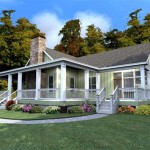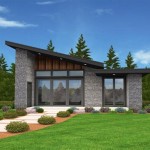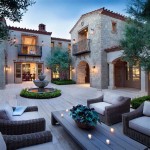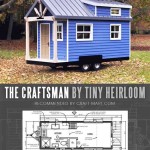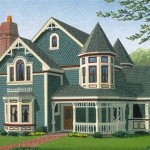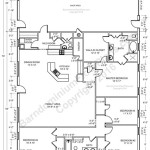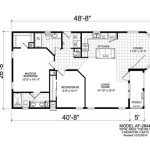American Foursquare House Plans: A Timeless Architectural Style
The American Foursquare house, also known as the Prairie Box or simply the Foursquare, is a distinctly American architectural style that flourished from the late 1890s to the 1930s. It arose as a reaction to the ornate Victorian era and offered a practical, efficient, and affordable housing option for the burgeoning middle class. American Foursquare house plans are characterized by their simple, geometric form, efficient use of space, and adaptability to various architectural influences.
The design philosophy behind the American Foursquare prioritized functionality and affordability. Houses were typically built on smaller lots in urban and suburban areas, making efficient use of space a crucial consideration. The simple box-like shape minimized construction costs and allowed for easy replication. While the basic structure remained consistent, Foursquare houses often incorporated details from other architectural styles, such as Craftsman, Colonial Revival, and Prairie School, providing a degree of personalization and visual interest.
Defining Features of American Foursquare House Plans
Several key features distinguish the American Foursquare from other architectural styles. These characteristics contribute to its recognizable appearance and enduring appeal.
Firstly, the dominant feature is its boxy, square shape. The house is generally two-and-a-half stories tall, with a low-pitched hip roof. This roof style provides a broad overhang, offering protection from the elements. Dormers, typically one or two, are often incorporated into the roof to provide additional light and ventilation to the upper floor. This verticality allowed for multiple floors on a relatively small footprint, maximizing living space.
Secondly, a wide front porch is a hallmark of the American Foursquare. This porch often spans the entire width of the house, providing a welcoming space for residents and guests. Porches are typically supported by substantial columns, often square or tapered, reflecting the sturdy and grounded nature of the design. The porch served as an outdoor living space, promoting interaction with neighbors and the surrounding community.
Thirdly, the interior layout is typically very symmetrical and efficient. The main floor usually features a central entrance hall with a staircase leading to the upper floors. Living spaces, such as the living room and dining room, are arranged on either side of the hall. The kitchen is typically located at the rear of the house. The upper floors typically consist of bedrooms and bathrooms. This organized layout made the most of the available space and facilitated easy circulation throughout the house.
Fourthly, windows are generally large and numerous, allowing for ample natural light. Double-hung windows are commonly used, and they are often arranged in symmetrical patterns. The windows contribute to the overall sense of openness and airiness within the house. Often, there are windows on all four sides of the house, allowing for cross-ventilation and minimizing the need for artificial lighting.
Finally, exterior materials commonly include brick, wood siding, or stucco. Brick was a popular choice for its durability and low maintenance. Wood siding, often clapboard or shingle, provided a more traditional and affordable option. Stucco offered a smooth and modern appearance. Regardless of the material chosen, the exterior is typically simple and unadorned, reflecting the emphasis on practicality.
Adaptability and Architectural Influences
While the basic Foursquare structure remained consistent, the style readily adapted to various architectural influences. Homeowners often incorporated elements from other popular styles to personalize their homes and reflect their individual tastes.
The Craftsman influence is particularly evident in many American Foursquare homes. Common Craftsman details include exposed rafter tails, wide eaves, and decorative brackets. Interior features, such as built-in shelving and cabinets, often reflect the Craftsman emphasis on handcrafted details and natural materials. The combination of the Foursquare layout and Craftsman detailing created a comfortable and functional living space with a focus on quality craftsmanship.
Colonial Revival elements are also frequently found in American Foursquare houses. These elements include symmetrical facades, columned porches, and decorative cornices. Interior details may include wainscoting, crown molding, and formal fireplaces. The Colonial Revival influence added a touch of elegance and formality to the Foursquare design.
Prairie School details, inspired by the work of Frank Lloyd Wright, can also be observed in some Foursquare homes. These details include horizontal lines, low-pitched roofs, and bands of windows. Interior features may include open floor plans and simple, geometric designs. The Prairie School influence emphasized the integration of the house with its surrounding landscape and created a sense of spaciousness and openness.
This ability to incorporate elements from different architectural styles while maintaining its core characteristics contributed significantly to the American Foursquare's widespread popularity. The adaptability of the style allowed homeowners to create a home that was both practical and aesthetically pleasing.
The Enduring Appeal of American Foursquare House Plans
The American Foursquare continues to be a popular and desirable housing option today. Its enduring appeal can be attributed to several factors. Its efficient use of space makes it well-suited for urban and suburban living. The simple, geometric design is easy to maintain and renovate. The adaptability of the style allows for personalization and customization. The solid construction and durable materials ensure that these homes stand the test of time.
Furthermore, the American Foursquare represents a tangible link to the past. These homes evoke a sense of history and tradition. They are a reminder of a time when quality craftsmanship and enduring design were valued above all else. The presence of these homes in many neighborhoods contributes to the overall character and charm of the community.
The ongoing preservation and restoration efforts related to American Foursquare houses demonstrate their continued relevance and importance. Many homeowners are committed to maintaining the original features of these homes while updating them for modern living. This dedication to preserving the past ensures that the American Foursquare will continue to be admired and appreciated for generations to come.
The practical aspects of the Foursquare also make it a desirable choice for modern families. The simple rectangular layout lends itself well to modifications and additions. Updating kitchens and bathrooms while maintaining the integrity of the original design is often straightforward. Furthermore, energy-efficient upgrades, such as improved insulation and modern windows, can easily be incorporated into Foursquare homes, making them more sustainable and comfortable.
In conclusion, American Foursquare house plans offer a compelling combination of practicality, affordability, and architectural appeal. Their enduring popularity is a testament to their timeless design and adaptability. The simple, geometric form, efficient use of space, and ability to incorporate various architectural influences make them a desirable housing option for homeowners seeking a comfortable, functional, and historically significant home.

An American Foursquare Story Four Square Homes House Plans Vintage

Chicago Vernacular Architecture

Modern American Homes Classic Foursquare C L Bowes 1918 Square House Plans Four

Traditional Four Square House Plan 50100ph Architectural Designs Plans

10 More Sears Foursquare Kit House Plans Part 2 Everyday Old

The Foursquare Past Present Everett Custom Homes

1925 Lewis Built Catalog Homes The Portland Square House Plans Four

Change Happens American Foursquare

Our House Plans Right Home Company

Frame Masonry Foursquare University Of Cky College Arts Sciences


